The primary purpose of stairs is to provide a simple and easy means of moving between levels of the building. However, in the hands of forward-thinking architects and designers they can become the focal point of the layout and be imbued with a symbolic meaning of transition, connection and harmony.


Hapimag office building by Hildebrand
Local architecture studio Hildebrand has designed an open-house office in Steinhausen, Switzerland, around a spiral concrete staircase that has been designed to double as an informal gathering space for all employees across hierarchical boundaries. Rising through the centre of the building, it ends with a large elliptical skylight that brings light into the centre of each of the four levels.
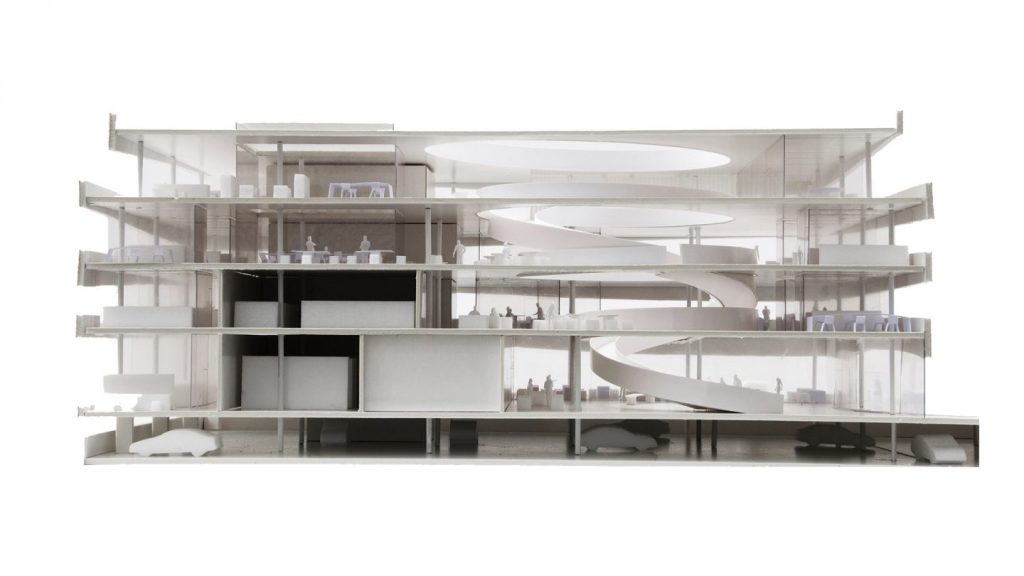
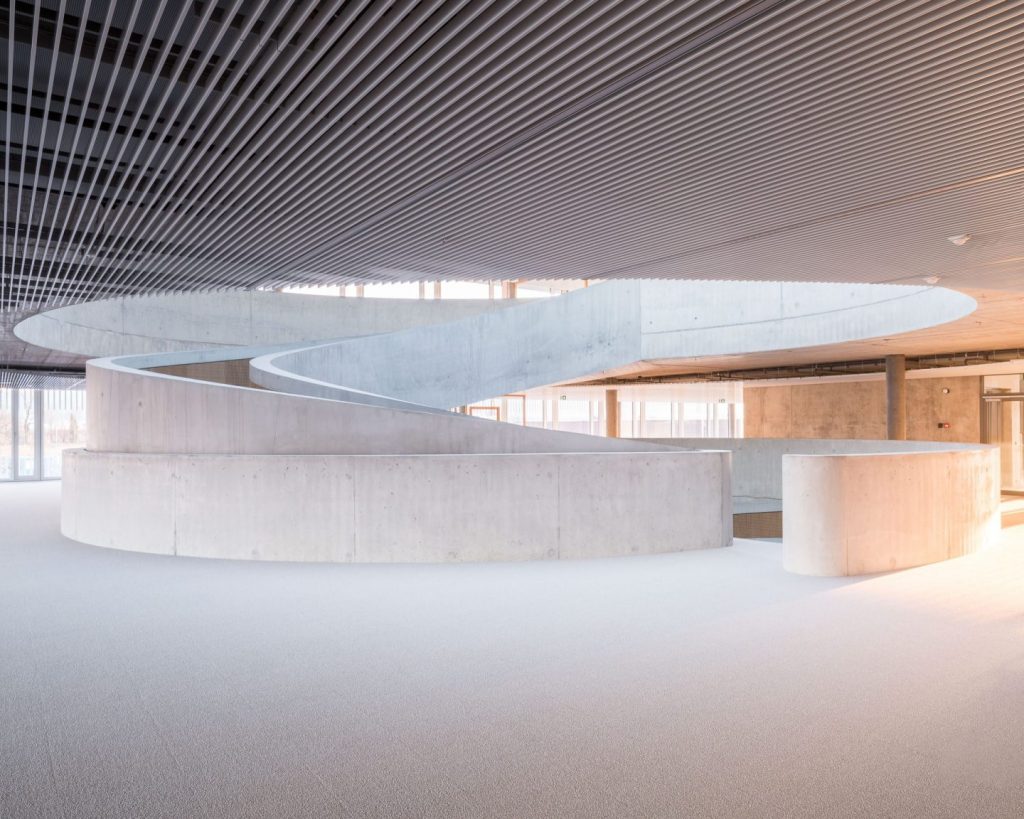
Hapimag office building by Hildebrand
While the atrium and the sculptural ramp create open and playful spaces for meetings and communication, the design concept of the rest of the space implies a simple plan that offers flexibility, which will allow the company to adapt to future developments in the constantly changing world of office structures. The only spaces sectioned off from the open plan floors are timber frames with glazed intended for quite meetings that provide privacy without breaking up the open effect.
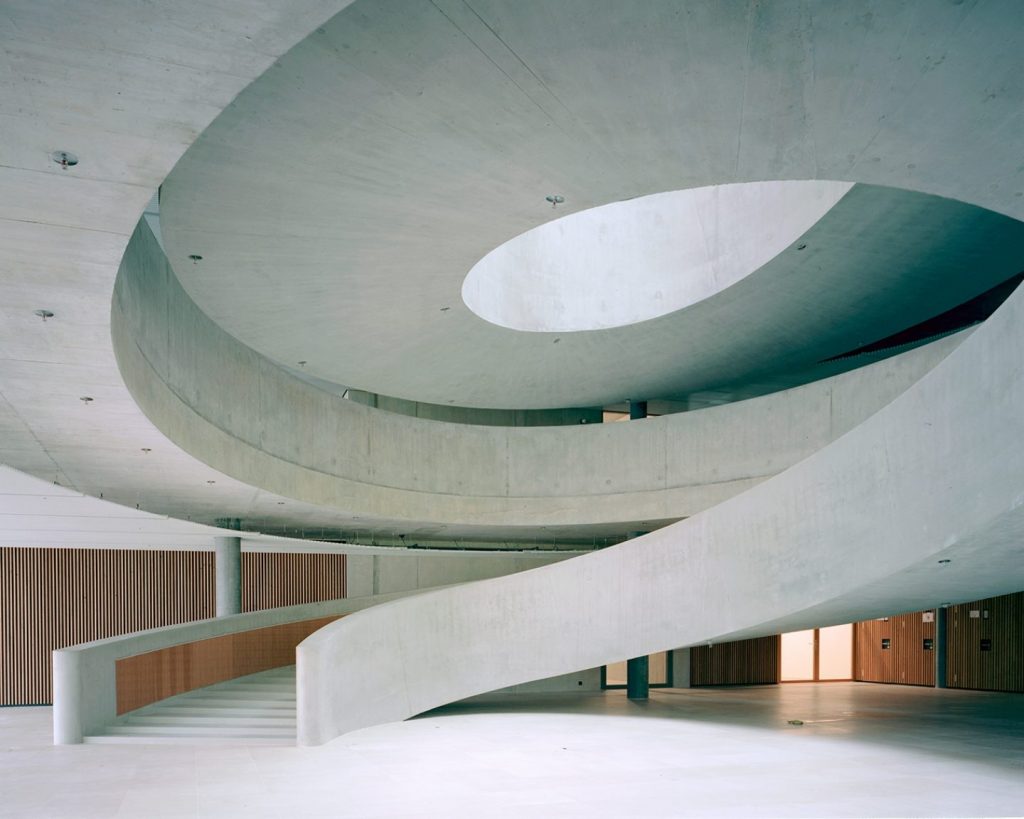
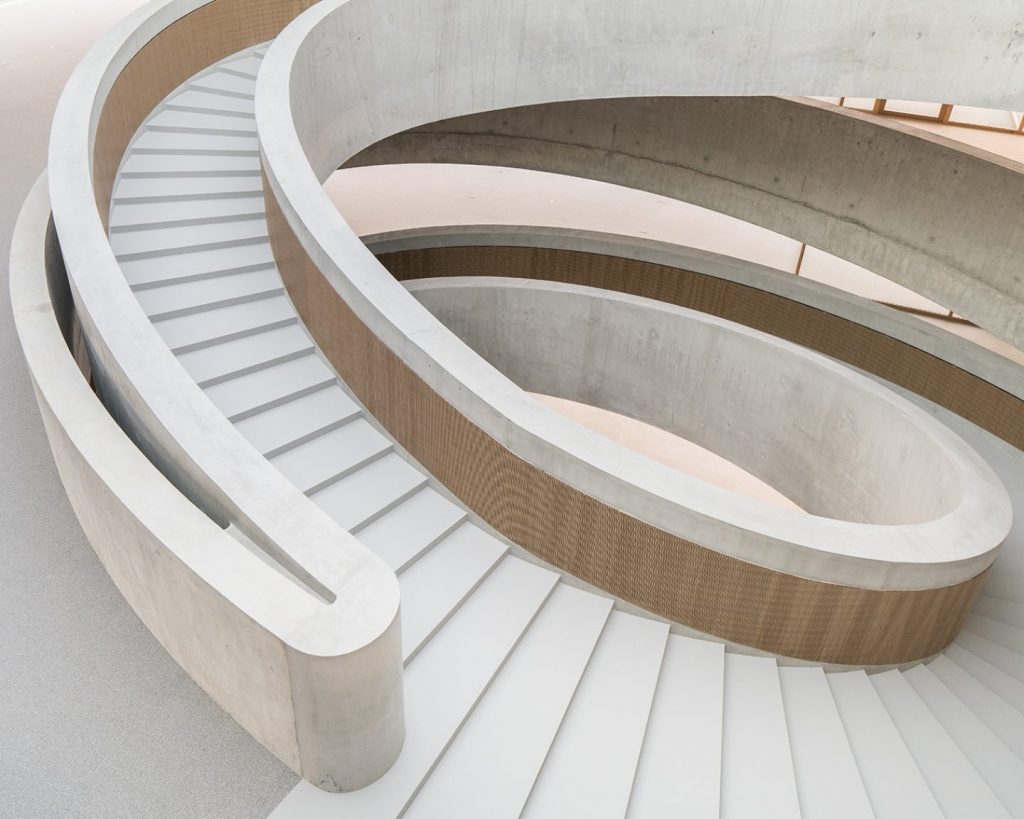
Hapimag office building by Hildebrand
The interior finishes are left exposed and raw. The ceilings, with white timber slats covering the concrete core, are supported by polished concrete columns. Wooden slats that run along the interior walls continue up the inside the central staircase.
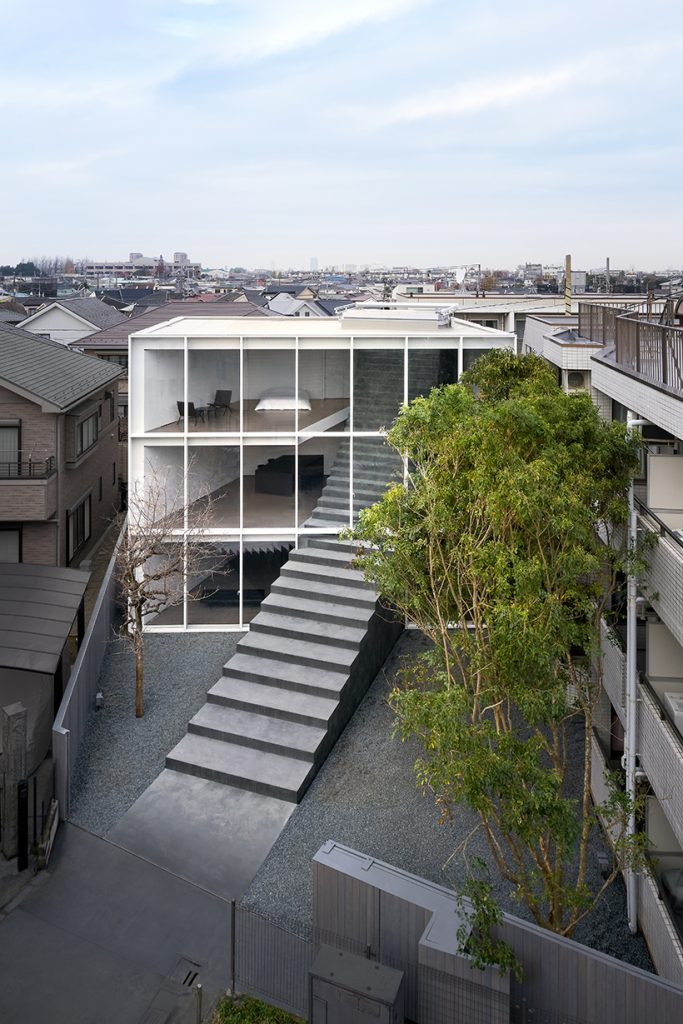
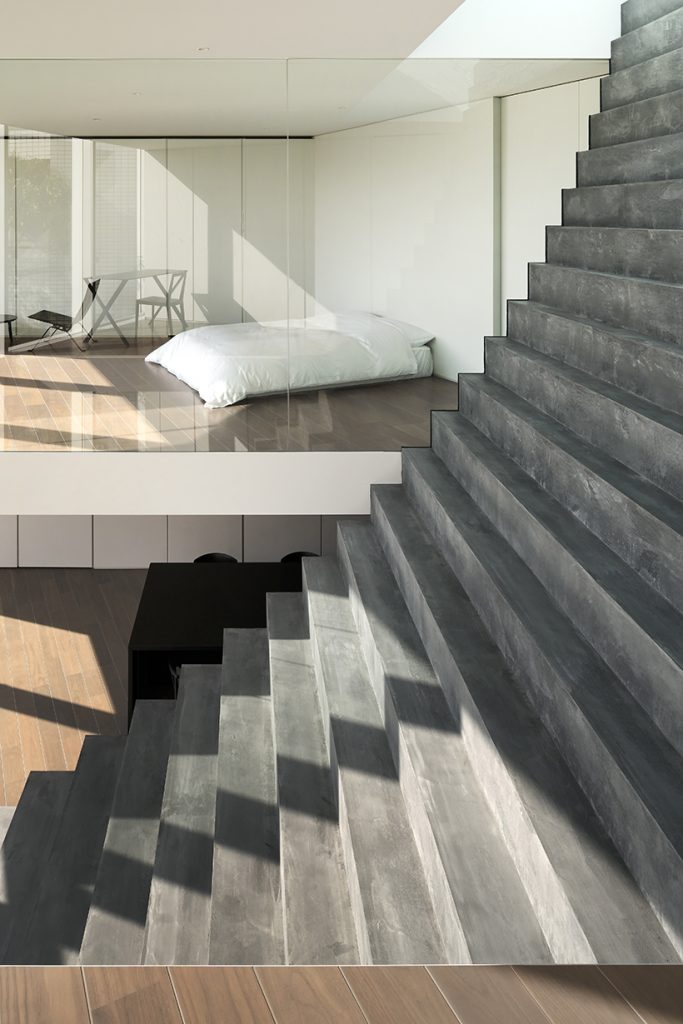
Stairway House by Nendo (also header image)
Japanese studio Nendo has designed a home for three generations of the same family in a quiet residential area of Tokyo, which is aptly titled Stairway House. As its name suggests, the building features a huge stairway-like structure that interrupts the floor plan of the house uniting every level of the structure and creating a space where all three generations could take comfort in each other’s subtle presence.
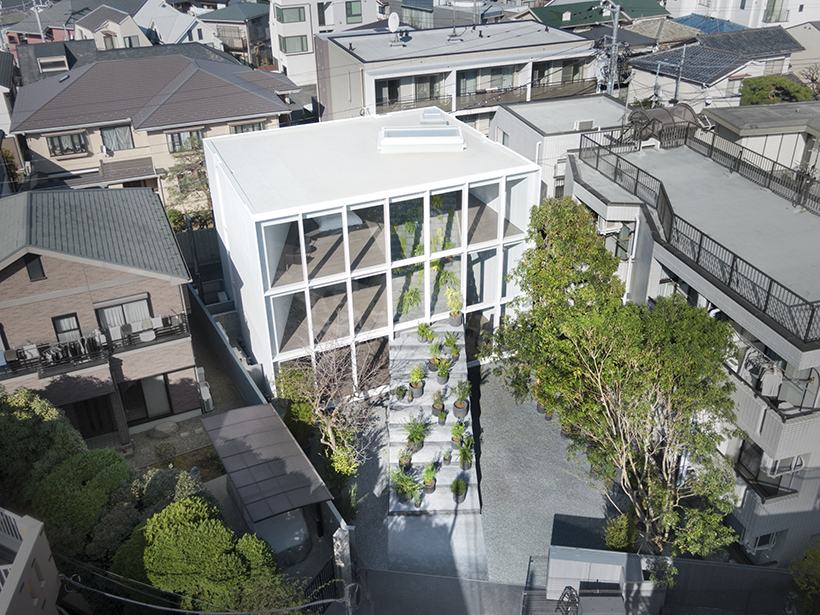
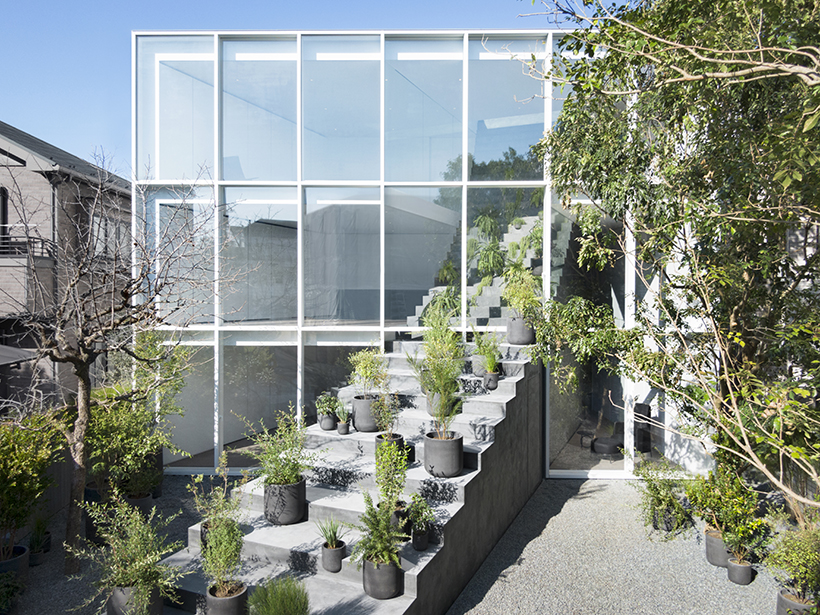
Stairway House by Nendo
While the younger couple and their child reside on the two upper floors, the rooms for the older couple in the family are arranged on the first floor. This solution addresses the potential difficulties of going up and down the stairs, as well as encourages the mother to enjoy her hobby of gardening. It also makes it easier for the eight cats living with the older couple to roam in and outdoors.

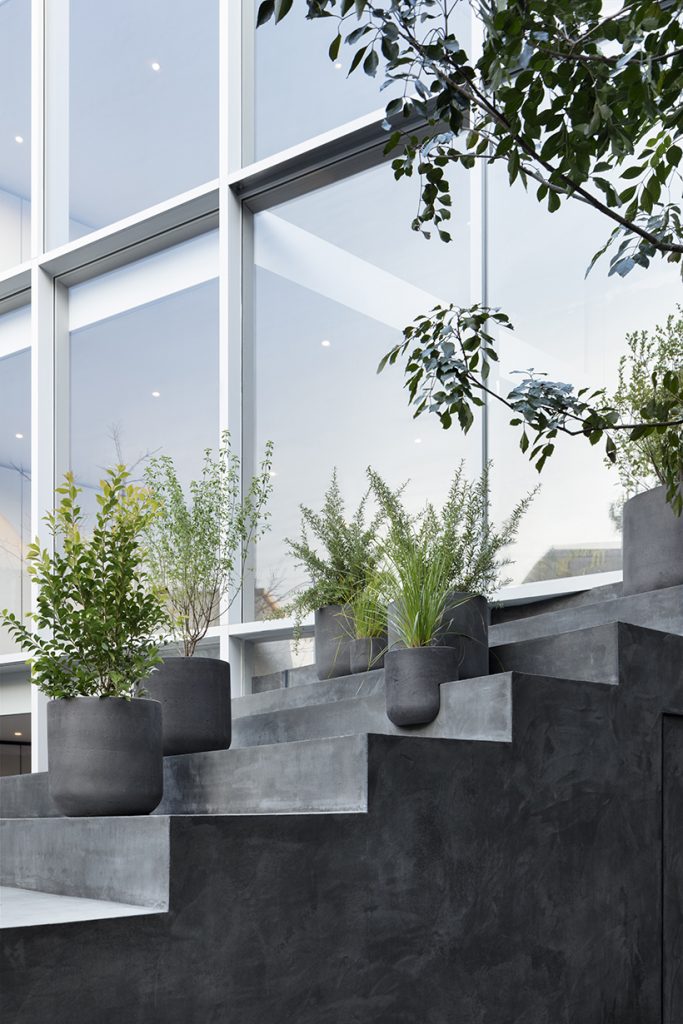
Stairway House by Nendo
The faux stairway runs from the southern yard, through the glazed facade and right up to the top floor. Enclosed inside the stairway are functional elements, such as bathrooms and a staircase for actual use, with the upper part transforming into a semi-outdoor greenhouse with abundant greenery as well as a sun-soaked perch for the cats.


Stairway House by Nendo
Not only does the stairway connect the interior to the yard, the structure aims to expand further out. Its one end joins the road on the ground level, while the other one extends out into the sky through the skylight.
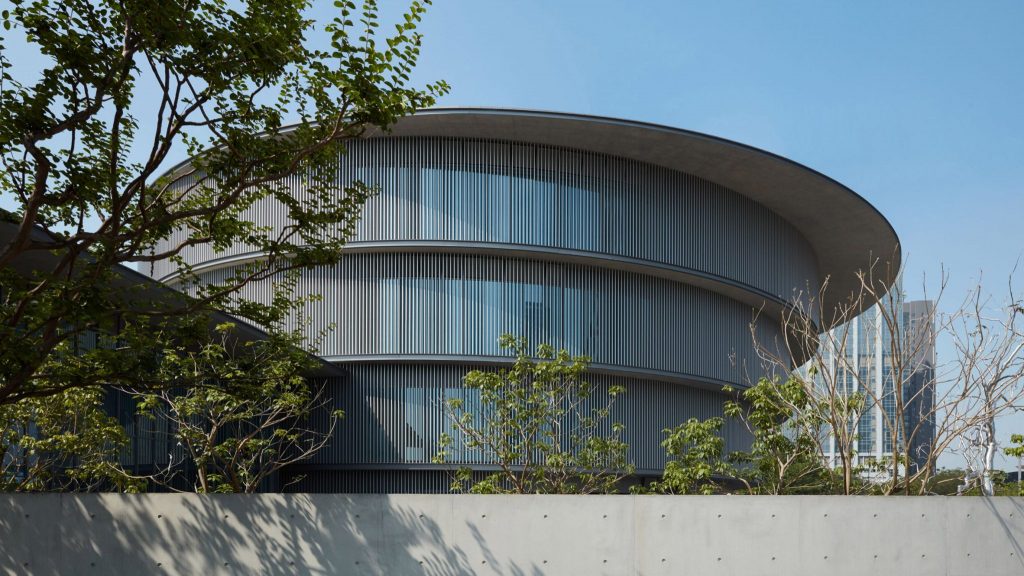
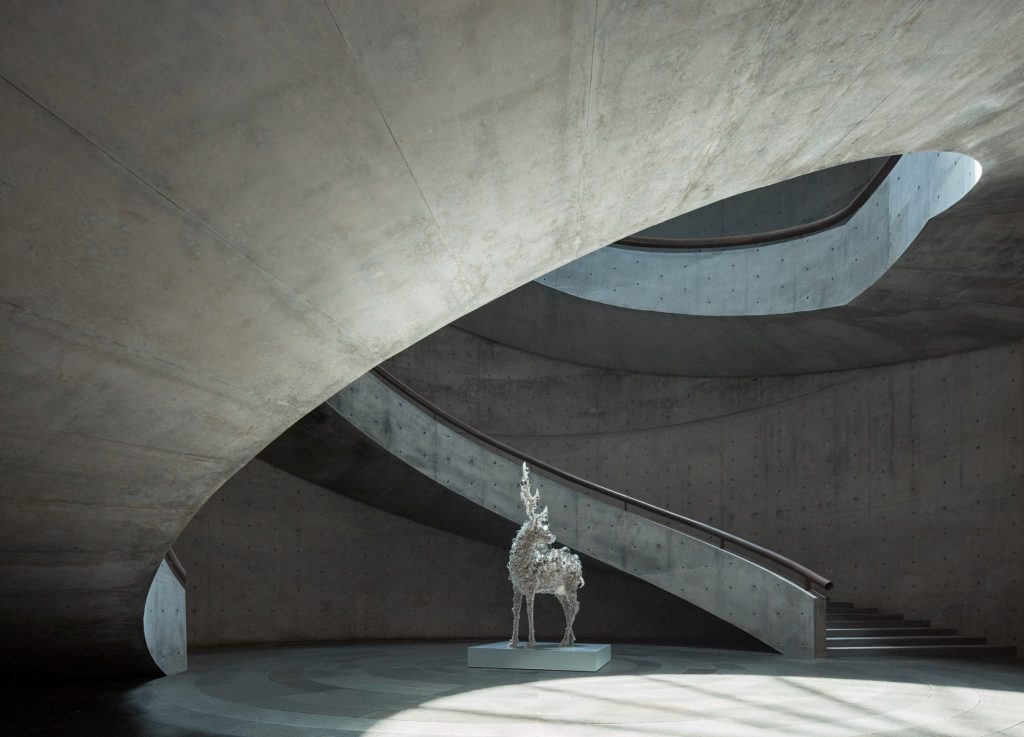
He Art Museum (HEM) by Tadao Ando (via archello)
The He Art Museum (HEM) in Shunde, Guangdong province in southern China, designed by the Pritzker-prize winning Japanese architect Tadao Ando is made from a stack of staggered, concrete disks wrapping around a pair of sweeping helical staircases at its centre. The dual-spiral structure, commonly known as a ‘DNA staircase’, creates a sense of temple when audiences look up to the roof in the central atrium with the natural light shining from the sky.
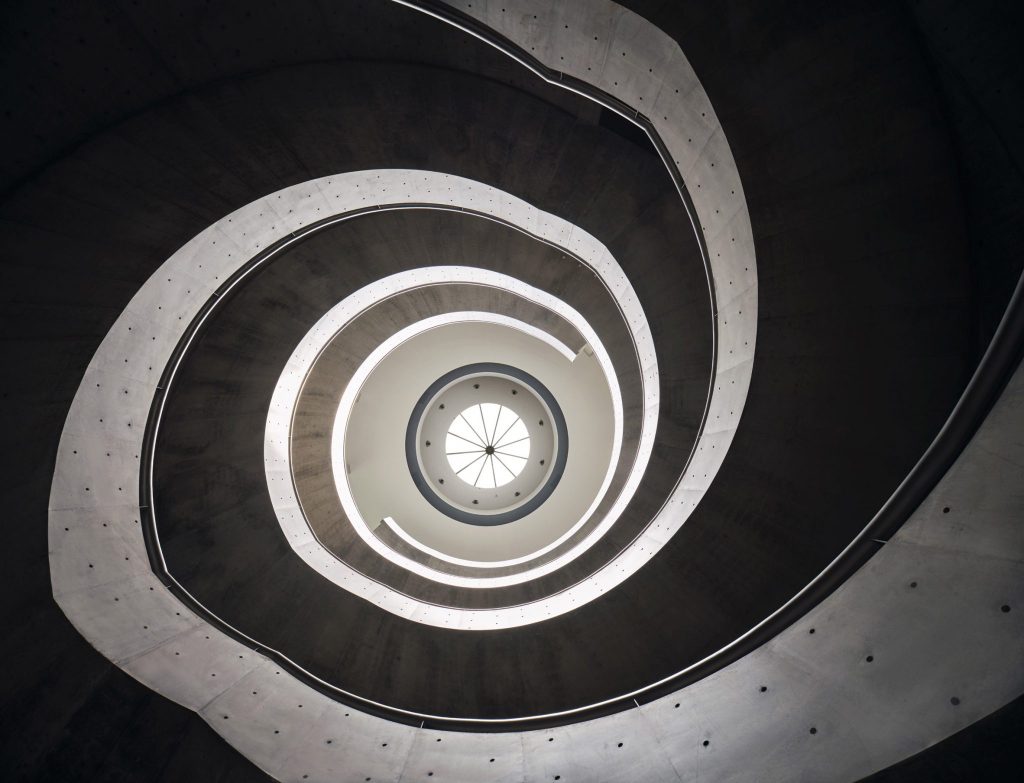

He Art Museum (HEM) by Tadao Ando (via archello)
The building was commissioned by the son of billionaire He Xiangjian, as the home for the He family’s contemporary Chinese art collection. As the family’s name, He, means ‘harmony’, or ‘balance’ in Chinese, the design of the building takes ‘harmony’ as the theme. Conceived as a landmark for the region, the 16,000 structure presents Abdo’s signature with the use of slick concrete, while cooperating various natural elements including light, water and wind.
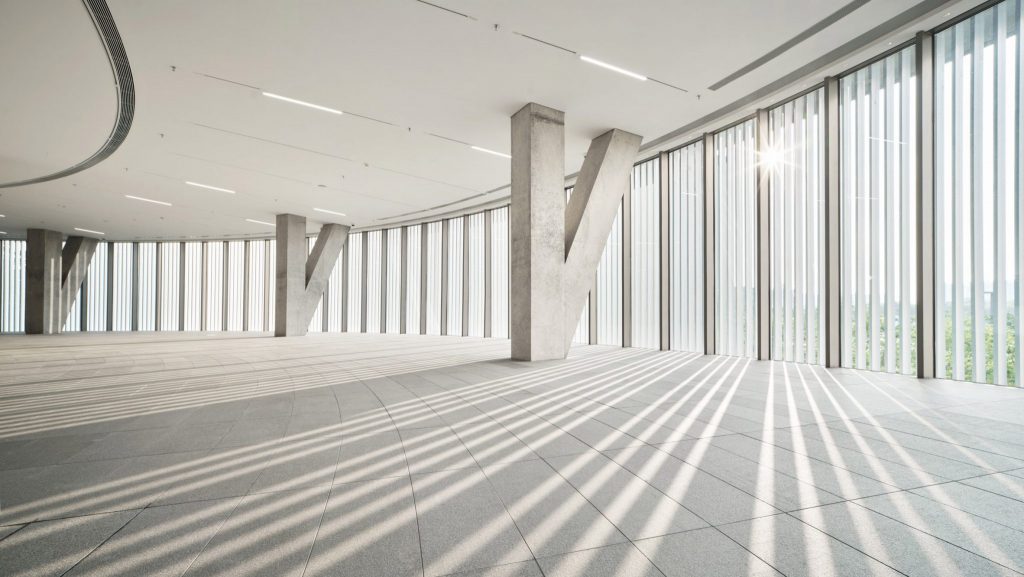
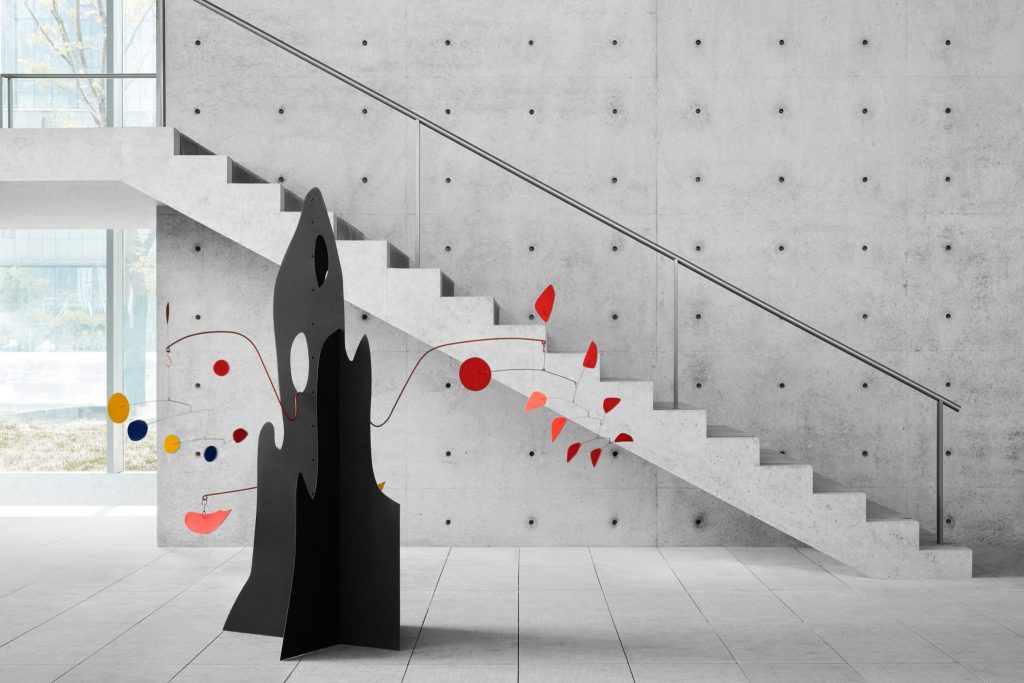
He Art Museum (HEM) by Tadao Ando (via archello)
The shape of the eye-catching staircase corresponds to the four overlapping circles that construct the space of the building through ripple-like expansion, from top to bottom. This dynamic geometry presents layers of spaces connected by the double-helix design, with different sizes of circles expanding to the outside, creating a sense of tension and rhythm.